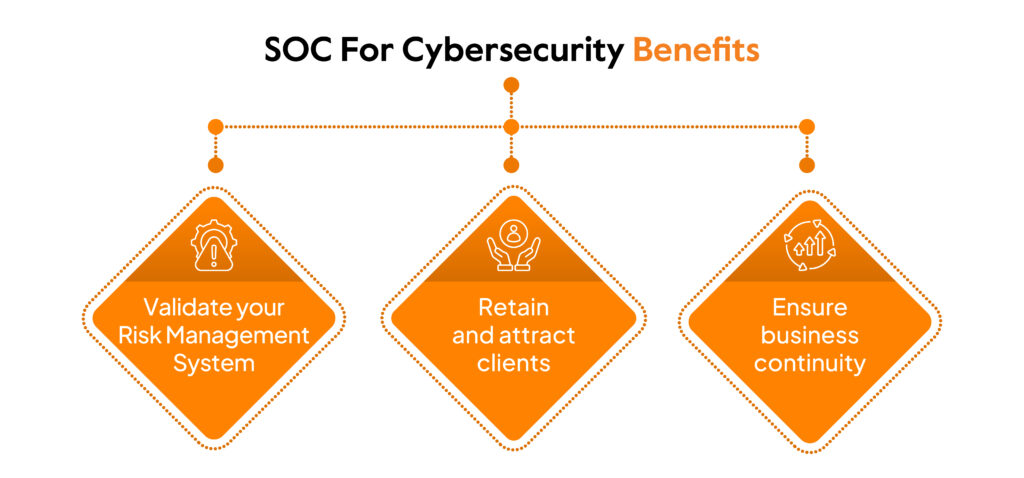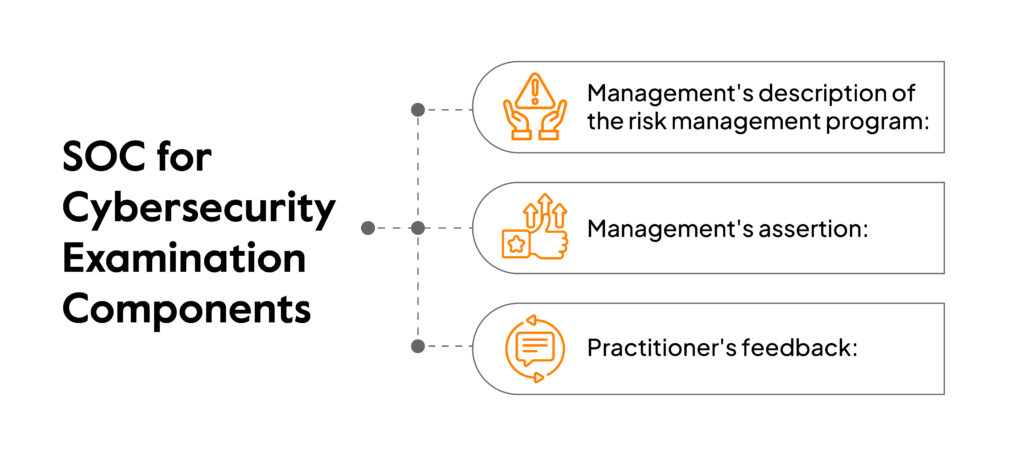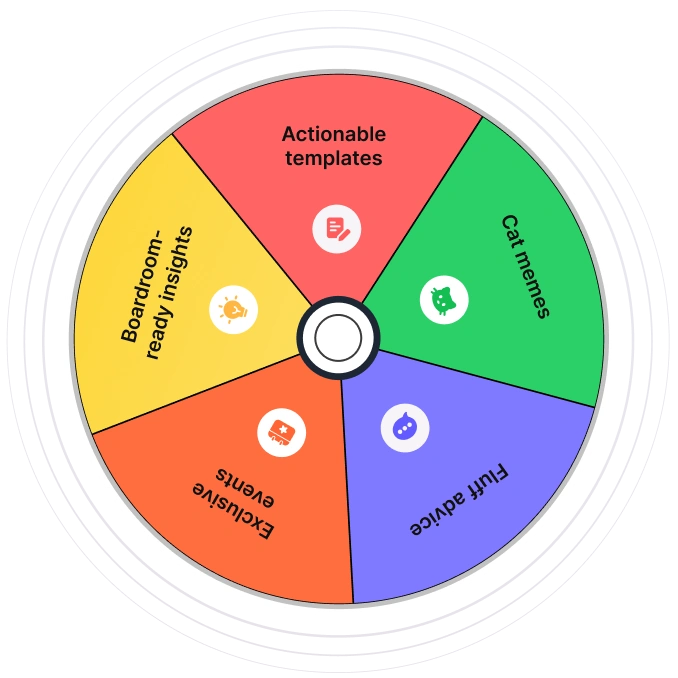A growing concern for service and non-service organizations alike is the increasing threat to data. With an increase in cloud exploitation by 95% businesses are under pressure to take adequate measures against malicious actors. One way to demonstrate their seriousness toward security is through a globally accepted framework like SOC for cybersecurity.
In this article, we discuss what SOC in cybersecurity is, why you need one, the criteria for SOC requirements, and more.
What is SOC for Cybersecurity?
SOC for cybersecurity is a reporting framework that helps organizations demonstrate the effectiveness of their cybersecurity management program along with its controls. This framework offers flexibility and is not mandatory.
Developed by the American Institute of CPAs (AICPA), it enables organizations of all industries to communicate relevant information about their risk management program using a simple and common language. It helps organizations demonstrate their commitment to ensure security best practices and protect customer data.
Previously, only service organizations were qualified for this examination. Now the scope is wider to include other organizations. This framework helps to compare the disclosure of similar frameworks like ISO 27001.
Why do you need SOC for Cybersecurity?
Many organizations look at the SOC for cybersecurity report as a ticket to avoid legal issues and other dangers stemming from non-compliance. However, you should not do it just for the sake of it. SOC for cybersecurity is a holistic approach to continuous growth.
As the business dependency on third-party services continues to grow, more systems are added to the existing infrastructure. While this shift improved workflow and efficiency, it opened the potential for vulnerabilities.

Validate your Risk Management System
SOC for cybersecurity does more than just measure the effectiveness of your security framework. Organizations often put their systems at risk while partnering with third-party service providers. About a fifth of organizations in 2021 faced a breach because their partner was compromised.
SOC for cybersecurity offers a framework that helps organizations efficiently mitigate this risk using preventive measures. It facilitates users to implement an organization-wide risk management solution that assesses the existing systems.
Retain and attract clients
Most businesses are unlikely to partner with you without sufficient proof of commitment toward a robust security posture. You gain a competitive advantage when clients see you take additional measures to protect their data.
Since security concerns and awareness will only increase in the future, it makes more sense to get SOC for cyber security attestation now.
If your existing clients are not worried about data security now, they might be in the future. You can retain clients and prevent them from switching to a competitor with an attestation report.
Ensure business continuity
Even the smallest security incident can create a massive setback. It not just impacts your work progress but can cause a ripple effect that affects multiple systems.
When it comes to security, prevention is better than cure. SOC in cybersecurity enables you to evaluate your risk management system.
This assessment helps to discover gaps and vulnerabilities so that you can fix them to ensure business continuity. (Case study: How Sprinto helped Dassana launch a SOC 2 compliance program centered on visibility)
SOC for Cybersecurity requirements
The AICPA SOC for cybersecurity has two main criteria to use as a part of this examination – descriptive criteria and control criteria.
Descriptive criteria are used to prepare and evaluate the description of your risk management program. The practitioner also uses it to evaluate that description. It can be categorized into these sections:
1. The type of your business and how it operates
Here you describe the type of product you sell and how you distribute them. For example, “my company (name) manufactures, processes, and distributes hard disks for the IT industry. The company operates online and has offline stores in Malaysia and Indonesia. It primarily operates from Taiwan and is headquartered in Taipei. The factories are located in Taipei and Seoul. The products are distributed by commercial carriers”.
2. Type of data at risk
Describe the types of information you collect, transmit, process, and store, and use. This can include information related to finance, sales, payment card data, online retail customer profile, confidential product specifications, proprietary information, and employee data.
Sprinto’s integrated risk management system identifies risks comprehensively, precisely, and accurately. Use industry grade benchmarks to score each risk based on its impact so that you never dismiss a risk prematurely.
3. Cybersecurity risk management program objectives
Describe the objectives of your risk management program related to the trust principles; availability, confidentiality, data integrity, and processing integrity
Document the processes you have used to establish, maintain, and approve the objectives that help you reach business goals
4. The factors that influence cybersecurity risks
- Factors that affect cybersecurity risks include characteristics of the technologies, type of connections, service providers and delivery channels
- It also extends to your organization and the characteristics of the users
- Include factors like environmental, organizational, and technological changes
- If any security incident occurred before the description period and impacted your systems, describe the nature, timing, and impact of those incidents
5.Cybersecurity risk governance structure
- Document the functions that help you establish, maintain, and communicate integrity or ethical values that support the functions of your cybersecurity risk management program
- Document the process of your management’s involvement in important functions of the program
- Establish cybersecurity accountability and reporting lines
- Document the process of hiring and developing individuals or contractors and the process for holding them accountable for their assigned responsibilities
6. Cybersecurity risk assessment process
Document the processes used to identify cybersecurity risks, changes within the environment, technology, organization, and other factors that can affect your program and achieve the its objectives
Record the processes used to identify, assess, and manage vendor and business partner risks
7. Cybersecurity communications and the quality of its data
Identify the process for communicating critical information such as objectives or responsibilities of the cybersecurity program
Identify the thresholds to communicate security events that require response, remediation, or both
Build a process to communicate with external parties on factors affecting the functioning of your SOC for cybersecurity program
8. Monitoring your risks
Identify processes to conduct continuous and periodic evaluation of of the effectiveness of the key control activities and other components related to internal control
Identify the processes used to evaluate and communicate the security threats, vulnerabilities, and control deficiencies to relevant stakeholders to ensure corrective actions are taken on time
9. Control processes
- Document the processes for building a response strategy, including the design and and implementation of control processes
- Summarize your entity’s infrastructure and the characteristics of its network architecture
- Identify the key security policies and processes you have implemented to reduce cybersecurity risks
- Create a process to detect security incidents, identify them, and develop and plan to respond, mitigate, and recover from incidents
Due to the continuously evolving nature of cybersecurity, you can select and use description criteria while you develop the description.
Control criteria are the baseline against which you can measure the effectiveness of your controls. It is used to evaluate your achievement against the selected trust service criteria.
Sprinto’s adaptive automation tool is built on smart architecture, equipping you with everything you need to implement, manage, and prove compliance for SOC for cybersecurity requirements. With Sprinto, you get:
- A single dashboard with 360° granular view of risks and controls
- Continuous monitoring of controls with tiered escalation for failing tasks
- Pre-built policy templates and training modules with in-app acknowledgments
- Real-time compliance through automated checks and workflows
- Continuous, comprehensive, and accurate monitoring of cloud
How much does SOC for cybersecurity implementation cost?
The implementation of SOC in cybersecurity has a lot of touch points but you can get an estimation of the cost. There are two ways to go about it, manual and automated. Here’s what the cost looks like
Manual implementation
- Implementation: $10,000 to $30,000+ and 6 months to implement
- Security tools (e.g., MDM, password manager, antivirus, vulnerability scanners): $21,200 to $172,500
- Continuous monitoring: $16,500 to $45,000 + 400 hours of leadership and team effort per year
- Security training: $250 to $12,500
- VAPT (optional): $1,000+ to $7,500+
- Audit: $5,000+ to $15,000+
Estimated total cost: $44,450 to $282,500+ with minimum 750 hours of effort
Compliance automation tool:
- Implementation: $9,900 – $39,900/year + implementation effort
- Security tools: Typically included in platform
- Continuous monitoring: Included in platform
- Security training: Usually included, but not always
- VAPT: Depends on partners/service providers
- Audit: Access to auditor network (vendor-dependent)
Estimated total cost: $15,900 – $82,400+ with additional implementation effort
Sprinto helps you get compliant at the fraction of a cost and time. It offers all the tools and capabilities required to collect evidence, eliminate risks, assess vulnerabilities, and monitor controls without breaking your bank.
Sprinto
- Implementation: Bundle starts at $4,900/year, 14 days to implement
- Security tools: Included in price bundling
- Continuous monitoring: Included in price bundling
- Security training: Included in price bundling
- VAPT: Access to preferred partner network for deals
- Audit: Access to Sprinto’s auditor network
Estimated total cost: $10,900 – $52,400 + 14 white glove onboarding sessions
Sprinto helps you get compliant at the fraction of a cost and time. It offers all the tools and capabilities required to collect evidence, eliminate risks, assess vulnerabilities, and monitor controls without breaking your bank.
How to implement the SOC for cybersecurity framework
You can prepare for your SOC in cybersecurity framework from start to finish following the five steps discussed below:
1. Select the right security framework
This usually depends on the type of data you process, primary location of operation, and type of industry. For example, if you run a healthcare business in the United States, HIPAA is mandatory. If you are a defense contractor in the U.S, NIST 8000 171 is compulsory.
2. Identify your key stakeholders and partners
Communicate the processes and key objectives with them and get a buy in from your upper management. Getting a buy-in from them is crucial to avoid disagreements and escalations down the line. Ensure that all roles and responsibilities are well documented.
3. Identify risks
Conduct a risk assessment to identify existing gaps, vulnerabilities, and opportunities for improvement. Once you have identified them, create a plan to prioritize them using a risk scoring method.
Sprinto’s integrated risk management solution empowers you to assess and visualize the true impact of security risks based on trusted industry benchmarks so you can manage risks with precision.
4. Eliminate gaps
Take corrective actions to patch the vulnerabilities and mitigate risks. Document everything to maintain an audit trail – the risks that you have mitigated, the ones which you have accepted, and the ones that you have rejected.
5. Hire your auditor
For the attestation stage, select an AICPA-approved independent CPA based on your industry. Ensure that they have adequate experience dealing with firms similar to your product or services.
Case Study:
Sprinto helped Dassana launch a compliance program centered on visibility. Here’s how.
6. SOC for cybersecurity risk management program
A cybersecurity risk management program includes the policies, processes, and controls that safeguard your information and systems from harmful incidents. It includes threats that impact your ability to detect, mitigate, respond, and recover from incidents. It also includes threats that can hamper your cyber security objectives.
Cyber Security objectives should target risks that could impact your organization’s business goals. It depends on factors like business objectives, the operational environment, mission, industry type, and more.
Objectives could fall into either of the three categories:
Operational objectives: Refers to the effectiveness and efficiency of operations like revenue goals and securing assets from loss.
Reporting objectives: Refers to internal and external finance-related or non-finance-related reports. It can also include reliability, timeliness, transparency, and more.
Compliance objectives: Refers to legal and regulatory requirements to which you must comply.
Objects should be specific, measurable, attainable, relevant, and time-bound.
Websites for SOC for cybersecurity certification
SOC certification for companies often leads to better contracts, particularly in regulated industries. The audit process identifies vulnerabilities, prompting necessary security upgrades. While costly, it’s an investment in long-term business resilience and reputation.
For individuals, SOC certification significantly boosts career prospects in cybersecurity. The certification process deepens your practical knowledge of compliance frameworks and risk assessment. It’s particularly valuable for roles in security auditing, compliance management, and IT governance.
Here are some websites where you can get a SOC certification:
- Certified SOC Analyst (CSA) Training | SOC Certification
- SOC for Cybersecurity Certificate Program | Courses | AICPA & CIMA
- Security Operations Center (SOC) Course (Cisco Learning & Certifications) | Coursera
SOC for Cybersecurity examination
SOC for cybersecurity examination is a report that describes your cybersecurity risk management program and the effectiveness of its controls. The final report consists of three components. An AICPA accredited auditor performs the SOC for cybersecurity examination based on two main criteria.
Let’s understand these in detail.
Management’s description of the risk management program:
This description aims to provide insight into how you identify information assets, manage potential threats against it, and the policies and processes you have implemented to secure against those threats.
This description additionally provides relevant context on conclusions in the report. It helps to prepare and evaluate your cybersecurity risk management program.
Management’s assertion: Provided by the management, this assertion can be at a specific point in time or over a specified period. It addresses if:
1. The stated description aligns with the description criteria and
2. If the cybersecurity risk management program controls are adequate to achieve the objectives based on the control criteria
Practitioner’s feedback: This is a report by the practitioner consisting of opinions to address the same concerns as the management’s assertion.
SOC for cybersecurity reports can be Type 1 and Type 2. Type 1 reports show your organization’s controls in a specified date and time. Type 2 report covers your organization’s controls over a course of time.

SOC for Cybersecurity VS information security
A common misconception out there is that the terms cyber security and information security can be used interchangeably. Let’s clarify this confusion.
SOC for Cybersecurity refers specifically to the controls and processes that an organization implements to manage security risks.
Information security on the other hand is a broader approach to security that includes risks in endpoint devices and data stored in a non-electronic format.
Conclusion
What if there was a super easy and fast solution to get all the requirements in SOC for cybersecurity and you didn’t have to break a sweat?
The Sprinto solution is your key to quick compliance. It is a logical approach to compliance that combines people, processes, documentation, incident management, and more to offer around-the-clock security. Sprinto is auditor-friendly and allows you to share evidence from a custom dashboard.
Using fully automated checks, you can ensure continuous compliance to flag off malicious behavior and get visibility to all your risks based on the threat level.
Talk to a compliance expert today to rock the SOC!
FAQs
What is the difference between SOC 2 and SOC for cyber security?
SOC for cyber security covers an organization’s cyber risk management program, while SOC 2 describes an organization’s security controls based on trust criteria principles (Security, Availability, Confidentiality, Privacy, and Processing Integrity).
What is a SOC in cyber security?
SOC in cyber security refers to the Security Operation Center that helps you monitor, detect, mitigate, and investigate security threats.
How frequently do you need to renew a SOC for cybersecurity report?
The frequency for renewing your SOC for cybersecurity report depends on the complexity of your infrastructure, types of controls, selected framework, and other regulatory requirements.
What does the SOC for cybersecurity report contain?
The SOC for cybersecurity report contains three main sections –
- Management’s description of the risk management program
- Management’s assertion
- Practitioner’s feedback
What does SOC for cybersecurity mean?
SOC in cybersecurity is a framework developed by the AICPA to help businesses assess and report on their cybersecurity risk management. A SOC is staffed with security analysts who monitor, analyze, and respond to cybersecurity incidents using a combination of technology solutions and a strong set of processes.
This framework enables CPAs to evaluate and communicate about an organization’s cybersecurity programs, providing stakeholders with valuable insights into the company’s security measures and their effectiveness.
Anwita
Anwita is a cybersecurity enthusiast and veteran blogger all rolled into one. Her love for everything cybersecurity started her journey into the world compliance. With multiple certifications on cybersecurity under her belt, she aims to simplify complex security related topics for all audiences. She loves to read nonfiction, listen to progressive rock, and watches sitcoms on the weekends.
Explore more SOC 2 articles
SOC 2 Compliance Overview
SOC 2 Preparation and Documentation
SOC 2 Audit and
Reporting
SOC 2 Differences and Similarities
SOC 2 Updates & Management
SOC 2 Industry-Specific Applications
research & insights curated to help you earn a seat at the table.








